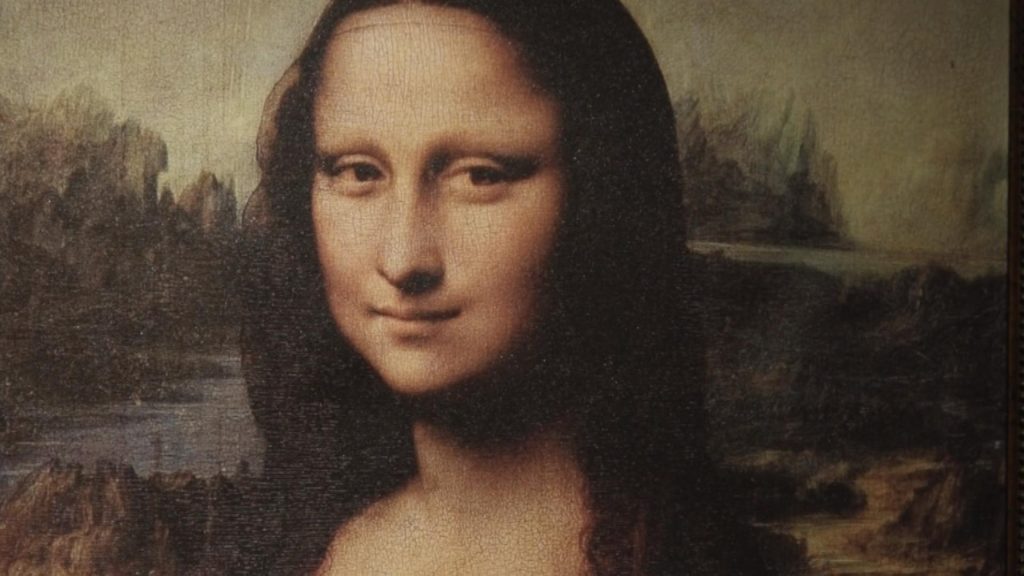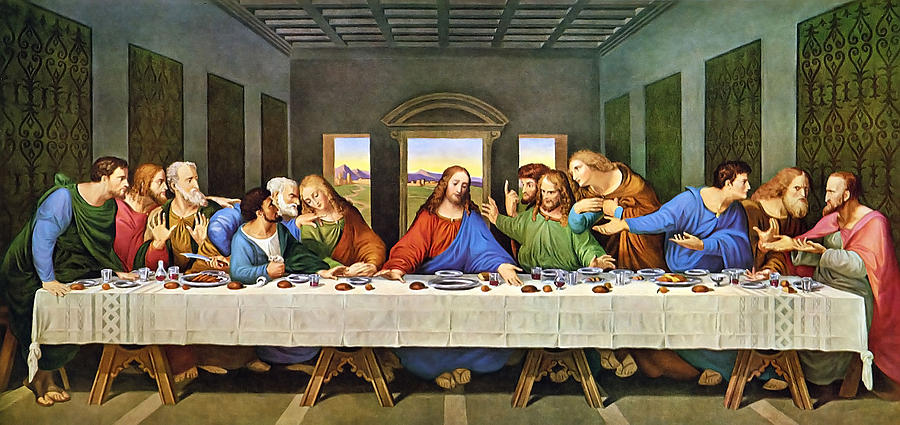“[Leonardo da Vinci’s] mind and personality seem to us superhuman, while the man himself mysterious and remote.” – Art Historian Helen Gardner.

PHOTO: oceansvibe.com
Born in 1452, Leonardo da Vinci is best remembered by most as one of history’s geniuses. He was one of the figureheads of the Italian Renaissance. He had an insatiable desire to learn about the world around him, has been called the father of paleontology, ichnology, and architecture, and is regarded as one of the best painters of all time. His inventions, journals, works of art, thoughts, and ideas changed the world.
We learn a little about this painter from Vinci in school. Everyone seems to know his name. However, there are some details about his life that history books seem to leave out. Here’s ten of them that are worth knowing about the original “Renaissance Man”:
1. For a While, He Was Best Known As a Musician

PHOTO: Best Painting 2017
Though we know him best as an accomplished painter and inventor, the early Renaissance world did not. Before his fame, Leonardo was a brilliant lyre player. When he was first presented at the Milanese court in Italy, it was a musician, not an artist or inventor!
2. He “Found” All of His Faces

PHOTO: Elsie’s RPC Blog
Each and every person you see in one of Leonardo da Vinci’s paintings really existed. He didn’t always bring them into his studio to reference while he painted, though. Instead, when he needed to discover a new face for one of his paintings, Leonardo would take a walk through the streets of Florence or Milan and wander around, staring at faces, until he found one that seemed to suit the subject he was trying to paint. He would then grab that person by the arm and make them hold still while he studied their face, and then rush home and paint in a frenzy before he forgot what they looked like.
It famously took him a long time to find the face of Judas Iscariot for his “Last Supper”. Leonardo da Vinci studied the faces of murderers, thieves, rapists, and other criminals in prisons, but none of them seemed to fit. One day, he walked down a back alley and saw a gambler playing with some dice. As soon as he saw him, he knew he had his Judas. He went home and painted him, and that gambler’s face has been immortalized in infamy ever since.
3. He Hardly Ever Finished Anything
!["The Adoration of the Magi", by Leonardo da Vinci. [PHOTO: araldodellospettacolo.it]](https://historythings.com/wp-content/uploads/2017/08/Adorazione-Magi-Leonardo_1.jpg)
[PHOTO: araldodellospettacolo.it]
Leonardo had a habit of accepting art and invention commissions without ever finishing them. At 25, he was hired to create an altarpiece for a chapel in a government building. He took money for the job, but never produced any work. In 1481, he was commissioned by some monks for another altarpiece. He did do some work on that, and it has become known as the Adoration of the Magi. He never finished that, either, but the work still hangs in the Uffizi Gallery in Florence.
4. He Created Many Military Weapons

PHOTO: weaponsandwarfare.com
Leonardo might be best known as a painter and pacifist, but he was also an incredible inventor. His journals are littered with sketches of weapons drawn in such detail that many people are able to recreate them today. He created a giant crossbow for the ruler of Milan.
In 1502, Leonardo da Vinci found himself mixed up with the despot Cesare Borgia, who commanded the papal army. Borgia was obsessed with conquering the world, and had Leonardo devise ways to protect his lands and conquer new ones. Leonardo created the world’s first submarine, a precursor to a tank (called an “armored car”), a triple-barrel canon, and even a helicopter.
5. He Hardly Slept

PHOTO: bustle.com
Leonardo da Vinci was a famously busy man. Between his inventing, painting, music, and scientific discoveries, he hardly had time for sleep! According to his journals, Leonardo da Vinci followed the “Uberman schedule”, a polyphasic sleep pattern consisting of 20-minute naps every four hours.
6. He Wrote His Journals In Code

PHOTO: Pinterest
Plagiarism was a huge problem in Renaissance Europe. It wasn’t illegal. There was nothing an artist or scientist could do if another stole his work. Afraid of other men stealing his ideas, Leonardo da Vinci wrote down all of his ideas in code. He left behind roughly 6,000 pages of work – all in mirror script, from right to left.
7. He Illegally Studied Cadavers

PHOTO: michaelbalchan.com
During the Renaissance, medicine was incredibly limited. Few knew how the human body actually worked. This was chiefly because the Church outlawed the dissecting of cadavers for scientific purposes, labeling it as “disturbing of the dead”. You could be put in jail, excommunicated, or, in some places, killed for cutting into a human body. Fueled by insatiable curiosity, Leonardo da Vinci was undeterred. He managed to procure corpses and performed numerous dissections and recorded his findings in his journals.
Leonardo da Vinci’s drawings of the heart, vascular system, genitals, and other parts of the human body are some of the first illustrations of their type in history. He was one of the first people since the Dark Ages to discover that the heart was responsible for pumping blood around the body!
8. He Was an Animal Rights Activist

PHOTO: medievalists.net
This might surprise you, but for all of his interest in cutting animals open and dissecting them to learn how they worked, Leonardo often wrote in his journals about his respect for animals and questioned whether humans really were a superior species. According to some stories, he even went around the city and bought caged birds in order to set them free, and experimented with vegetarianism.
9. He Was Rivals With Michelangelo

PHOTO: dvdtalk.com
Renaissance artists often had to compete for patronage, but these two took it to a whole new level. Leonardo da Vinci and Michelangelo despised each other. The younger sculptor liked to mock Leonardo about his inability to finish anything; Leonardo, in turn, cut in to his rival over Michelangelo’s exaggeration of the human form. They never reconciled.
10. He Never Went to School

PHOTO: geekpreneur.com
Despite being one of the most intelligent men who ever lived, Leonardo da Vinci was never formally schooled in mathematics or science. His parents never married each other, and Leonardo da Vinci grew up as the illegitimate son of a peasant woman. He did receive basic instruction at home in reading, writing, and math, but most of his education came from growing up outdoors in rural Tuscany.
When he was a teenager, he was apprenticed to the artist Andrea del Verrocchio, a Florentine painter. The story goes that when Leonardo painted one the angels in Verrocchio’s work, “The Baptism of Christ” (it was common for students to paint small portions of their master’s work), Leonardo’s teacher was so humbled by his student’s skill that he vowed never to paint again.

